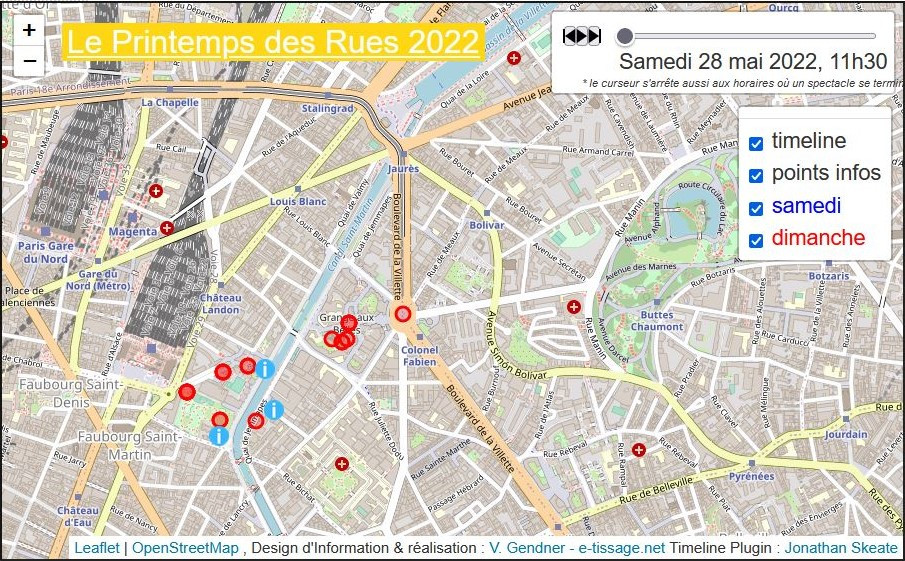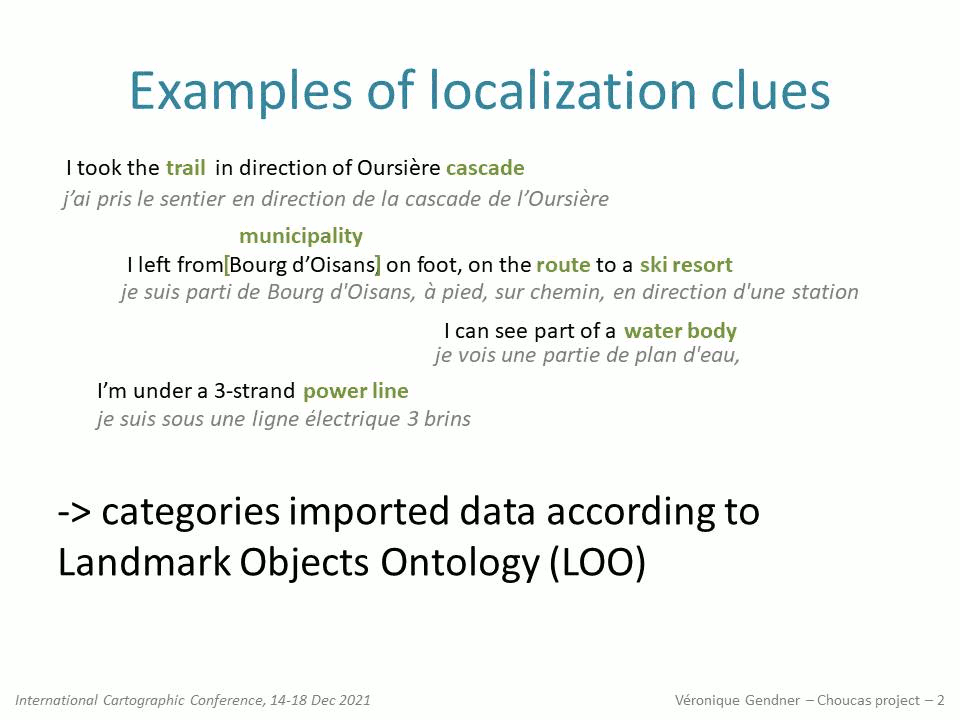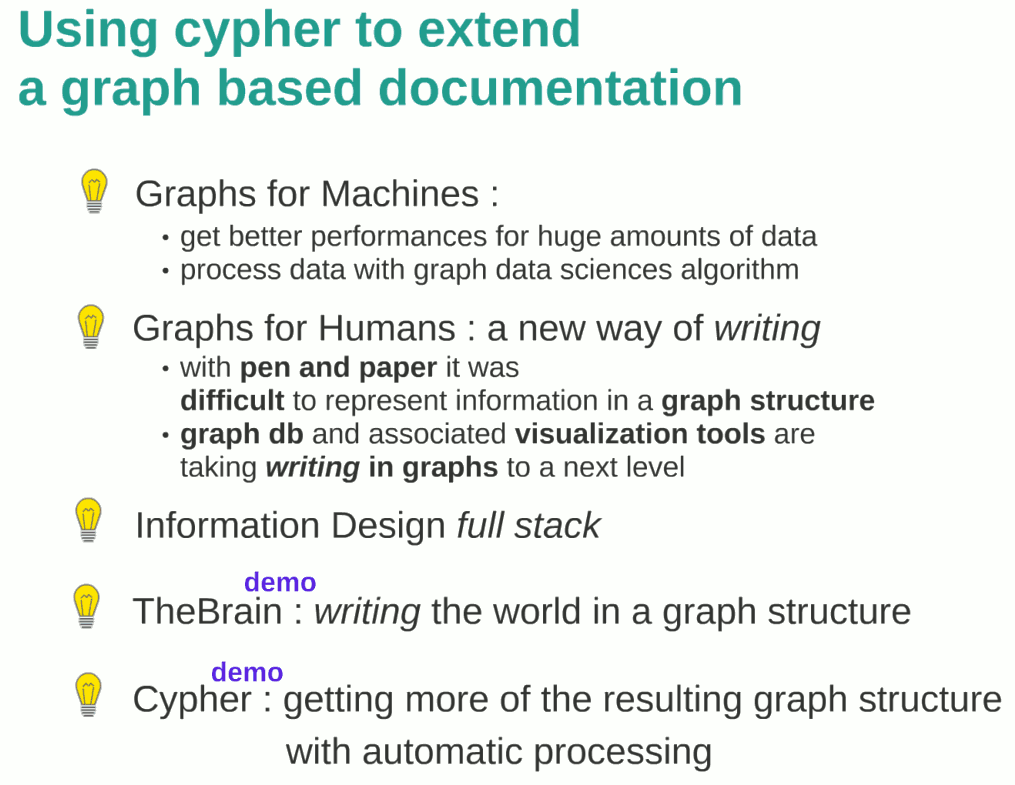Design d’information
Quoi, où ? mais aussi quand ? une carte avec un curseur de temps (timeline)
Avoir la bonne clé d’accès à l’information est essentiel pour attraper les informations dont nous avons besoin. Les outils numériques ont l’énorme avantage de permettre des représentations avec plusieurs clés d’accès. La création d’une représentation numérique adaptée passe donc par l’identification des clés d’accès utiles. Voyons par exemple, le cas d’un festival qui présente des spectacles dans différents lieux.
 Lire la suite »
Lire la suite »GeoGraph : Modelling and building a graph database of multi-source landmarks to help emergency mountain rescuers
The purpose of the Choucas research project is to come up with methods, tools and resources, to help mountain rescue team localise victims, when answering emergency calls. In this context, we have built a graph data base with the Neo4j Label Property Graph (LPG) technology, that integrates several sources of geolocated objects. Some data comes from the national mapping agency (IGN BDTOPO), others, like routes from crowdsourcing websites. Categorization of multi-source imported data has been normalized by an instantiation process based on the Landmarks Objects Ontology (OOR) that had previously been produced by the project team.
The flexibility of graph databases helps make the right modelling choices by progressively taking into account problems observed in the data as well as researchers and users feedback and new needs.
A more in depth presentation of this work, with a demo of a python script to display the content of the database on a map, with QGIS can be seen here.

Here is the presentation of this work done at the International Cartographic Conference, on 15th Dec. 2021 : Lire la suite »
NODES 2020 : Using Cypher to Extend a Graph-Based Documentation
At NODES2020, I’ve presented about graphs for humans : how to manually build a graph structured documentation with TheBrain Technologies, and why this graph writing is so useful.
Also how cypher (Neo4j *) can be used to automatically extract tables or hierarchies needed for specific contexts of use of this documentation.
Along the way, I’ve exposed some ideas about Information Design, the way I see it, that is including all that concerns representation of information but also structuring and the way they are interrelated.

Treemap : représenter une structure hiéarchique ET un rapport de grandeurs
Les trois pôles de l’économie mondiale
En 2010, le PIB des Etats-Unis est de 14 527 Md de dollars US, c’est-à-dire une valeur comparable à celui de l’Union Européenne, soit 16 242. Pour la Chine, le chiffre est de 5 878 Md et de 5 459 Md pour le Japon. Le Brésil … ATTENDEZ!! NE PARTEZ PAS! … Promis, juré: j’arrête d’égrainer des chiffres !
En effet, il se trouve qu’une représentation graphique bien pensée remplace souvent avantageusement des colonnes de chiffres. Prenez un article comparant les PIB dans le monde et dont l’argument est de dire que trois pôles se distinguent dans l’économie mondiale. Il s’agit donc de présenter les chiffres de ces trois pôles, avec pour chacun, le détail par région et par pays – taxinomie, tout en mettant en évidence les rapports de grandeurs entre les différents PIB.
Dans ce cas, la meilleure représentation est un treemap. Lire la suite »
 alerte email - nouveaux articles
alerte email - nouveaux articles fil RSS - nouveaux articles
fil RSS - nouveaux articles Véronique Gendner, e-tissage.net
Véronique Gendner, e-tissage.net